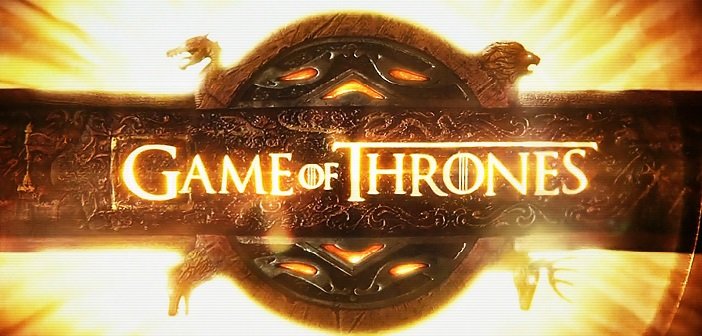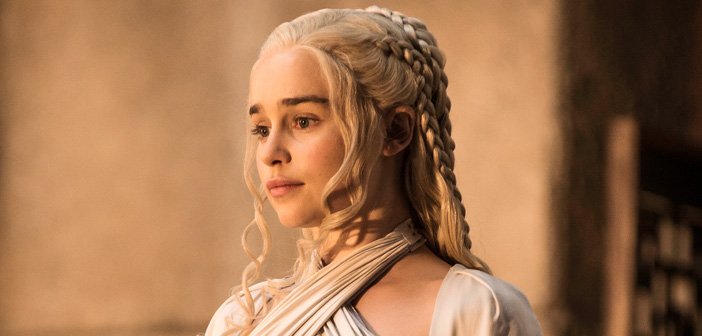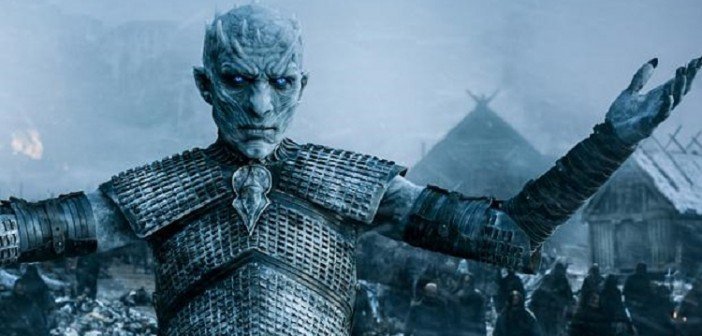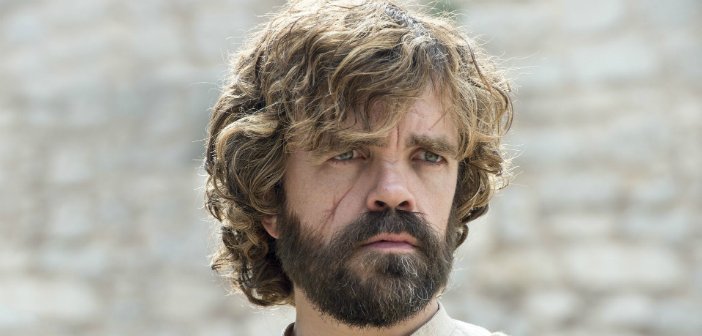Literature on Film | Part 10 |Has Game of Thrones Deviated Too Far from the Source Material?
*WARNING – SPOILERS*
When Game of Thrones debuted in April 2011, it was a modest success. It became yet another of HBO’s many exceptional programs. But in the years since, the show’s following has exploded and the world of Westeros has become something of a cultural phenomenon. This is due to several factors; it is populated by a diverse array of characters, brought to life by a team of great actors of all ages; the story is unconventional and regularly, deviously, subverts viewer’s expectations with plot twists that are mercilessly cruel and shocking; but one of the shows primary boons is that it is set in a meticulously crafted, and impossibly dense world, with its own ecosystem of countries, cultures and religions, all propped up by an extensively detailed history leading up to the time of the main show’s story line. This rock-solid foundation is derived from the source material for the series, A Song of Ice and Fire, written by George R.R. Martin.
Leading up to the release of the series’ first instalment, A Game of Thrones, in 1996, Martin had written several short stories and novels, while in the mid to late 80’s he worked as a television writer. He worked on shows like The Twilight Zone and Beauty and the Beast, while also attempting to get pilots of his own made. His experience working on television, and the restrictions and limitations therein, are noted by Martin as his chief inspiration for starting work on the Ice and Fire series. He wanted to create a massive world, free of the restrictions of a narrow, small screen narrative. The sheer scale and depth of the world he created was, at the time, something that could only exist within the confines of the book and its reader’s imagination.

At the turn of the century, the success of Lord of the Rings trilogy proved that not only was it possible to bring sprawling fantasy worlds to the screen, but that it could be a profitable venture. Martin has noted that he had many suitors to the series’ rights, but the plot was simply too dense to faithfully transfer to cinema screens. Producers pitched films focused specifically on particular characters like Daenerys Targaryen and Jon Snow, but Martin was averse to the idea (Imagine, a straight to DVD Jon Snow movie, Adrian Brody staring gormlessly from the cover. No thanks). It wasn’t until fledgling TV producers D.B. Weiss and David Benioff – both passionate fans of the series – pitched Martin, that he found the right fit to bring the show to the screen.
The massive world would be impossible to lay out here; even in the books themselves, and the subsequent TV series, it’s simply unfeasible to present everything at once. And wisely, both Martin and the HBO show-runners, D.B. Weiss and David Benioff, opted to the deliver the story first, with the world’s depth revealing itself as the narrative progressed. Martin achieved this in the books through his viewpoint characters. The family at the centre of the series, House Stark, served as the reader’s entrance point to the world – though there were also chapters from the POV of exiled royal Daenarys Targaryen, and the wily, fan-favourite dwarf Tyrion Lannister – so through their eyes and through their conversations, the reader was illuminated on the currents events of the story, with hints at the wider history and context peppered throughout.
Achieving this effect for television was a difficult task; for an audience going in cold, detailing a world with two diverse continents, multiple religions and its own unique weather system was a massive challenge. Again, wisely, the creative team opted to let the narrative lead the way. The main thrust of season one was the noble Stark family coming into conflict with the devious Lannister family. The story rapidly branched out as the season progressed, and by season six the show’s characters are spread throughout both of the world’s continents, Westeros and Essos. While the conflict between the Starks and Lannisters gives the viewer a sense of the series’ chief location Westeros; Daenerys Targaryen’s journey across the more arid and exotic Essos fills out the rest of the picture.

The series was also freed from the strictures of the viewpoint narrative, which allowed the creative team to make scenes between non-viewpoint characters that were rewarding and illuminating for fans of the books. A key early scene between the King Robert Baratheon and his wife, Queen Cersei, gave a great insight into their married life that was completely absent in the books. Additionally, the early seasons had some great scenes between the series’ two great political puppet masters, Petyr “Littlefinger” Baelish, and Lord Varys. These scenes were essentially fan service, but they still worked to give an insight into the political machinations of the world. An unadulterated, purely fan-service moment came in season two’s penultimate episode, where two of the story’s most dangerous warriors, Sandor “The Hound” Clegane, and the lithe and quick witted sellsword Bronn, came close to conflict. Scene like this, that were absent in the books, serve as enjoyable nods to long-time readers of the series.
When the series first began in 2011, the show could have been seen as a risky prospect. Chiefly because it is set in a world of high fantasy, and while the public had shown an appetite for it on the big screen, on television, the world of dragons and magic seemed more akin to SyFy channel fare. It’s telling that, in the books, Martin had a unique way of establishing the more fantastical elements of his world. Describing his process, he used the analogy of magic in a story as a person in a hot bath; you don’t dump someone in hot water, you introduce the hot water slowly until the bather is comfortable in the heat. In both the books and the shows, this method is apparent. Season one had many fantasy elements, but they were firmly in the periphery; half seen zombie like figures; rumours of long extinct dragons. The thrust of season one was the mundane plight of Stark patriarch, Eddard, trying to haphazardly navigate the various schemes within the capital, Kings Landing. But by season six, we have elf-like grass children throwing energy balls at legions of ice zombies and nobody is batting an eyelid; the water is boiling but we’ve been enjoying the bath too long to care. It’s a testament to the quality of the storytelling, both in the books and on the show that it has managed to continually grow its fan base, without alienating people who initially wouldn’t have enjoyed the fantasy elements.

One benefit of the most enjoyable aspects of the TV series is seeing the actors give life and enhance great characters. Characters that were perfectly fine in the books, were greatly enhanced due to some bravura, scene stealing performances. In the books, Khal Drogo served mainly as a foil for Daenerys; through her interactions with him, and her experience at his side as his Khaleesi, she developed as a character. This is true also of the series, but Drogo, portrayed by Jason Momoa, was a magnetic, primal figure; with his aggressive and intense screen presence, the TV series’ Drogo was an impressive and imposing character; may he rest in peace. Another example was the Red Viper, Oberyn Martell. His character and arc in the books mirrored his arc in the series, but he was portrayed with such flair and gravitas by Pedro Pascal, that he swiftly became a fan favourite; may he rest in peace. Ask anyone who has read the books and watched the series and they’d probably have other examples of great acting enhancing the characters; Stephen Dillane’s gruff, pragmatic Stannis Baratheon, Arya Stark’s charismatic sword trainer Syrio Forel, brought to life by Miltos Yeromelou, or Richard Madden who gave a weighty, memorable performance as Robb Stark were some the many exceptional performances that brought Westeros to life; may they all rest in peace.
Another challenge of the TV series was giving the massive cast of characters the time to be established. In the books Martin has the time and scope to extensively establish the many different peoples of Westeros and their various motivations. To achieve this in the series the showrunners had to be creative. They did this by merging characters and storylines; Theon’s uncles Euron and Victarion Greyjoy seem to have been merged into one; many of the colourful characters of the Brotherhood Without Banners were synthesised into the red priest, Thoros of Myr; and some characters were chopped entirely. The TV series has shown great economy in establishing characters thorough small interactions. For example, take how the Stark family matriarch, Lady Catelyn’s brother and uncle are presented in the books. Her brother, Edmure Tully, is weak, petulant and ineffective, while her uncle, Brynden “the Blackfish” Tully, is gruff, decisive and warrior of great renown. In the books the author has the luxury of colouring in these characters over several chapters. On television, with dozens of other characters to address, there is no such luxury. So early in season three, both of these new characters were introduced in a simple effective fashion. Lord Hoster Tully, the Lord of the Riverlands had died. His funeral ritual involved his body being placed on a boat and set alight with a flaming arrow, Viking style. His son, the aforementioned Edmure, is tasked with taking the shot. He fires one shot, which lands harmlessly in the water, as the mourners look on uncomfortably he misses a second and third shot. Exasperated, Brynden snatches the bow out of his hand, shoves his nephew to one side, deftly gauges the wind and successfully sets the boat alight in one shot. In just over three minutes, the series manages to present us with two fully formed characters.

In the early seasons of the HBO series, the show remained fairly loyal to the source material. Unlike AMC’s The Walking Dead, which opened in the same manner as its source comic,and then rapidly took its own path, Thrones mimicked the book’s beats blow for blow. As the seasons progressed a pattern was observable; the season opener was generally restrained. It calmly put the pieces in place for the coming season; episode nine would always be the most explosive episode, with either a shocking death or a thrilling battle scene, the penultimate episode of the season is always one to look forward to or dread depending on your disposition; and the final episode of the season would be something of a season post-mortem which would survey the character’s emotional states after the events, and set them up for their future adventures. The books and the series, however, have begun to diverge stylistically due to the events of the third book of the series – which sourced the third and fourth season of the show. The third book, A Storm of Swords, is a literary thrill ride. It’s essentially a payoff from the previous two books, with chapters littered with memorable and shocking moments. When these events were brought to television, it launched the series into the pop culture stratosphere. Episode nine of season three featured a shocking bloodbath known as The Red Wedding in which several key characters were killed. The event itself, and the shocked fan reaction became a viral online event, and the show’s viewership, which was steadily growing season on season, shot up.
This is where the style of the books and series diverge. After the events of A Storm of Swords, Martin’s storytelling in the subsequent books became more ponderous and slow moving. He split the character narratives between two books, meaning fan-favourite characters like Jon Snow, Daenarys Targaryen and Tyrion Lannister were left on the side lines, and focused on new areas like Dorne and Oldtown. The series however, towards the end of season five, has seemed to rapidly accelerate in storytelling pace.

TV viewer’s appetites are voracious, they want satisfying payoffs. After season four, the TV series rapidly caught up with Martin’s books; season five was mostly taken from the fourth and fifth novels, with some flourishes of new material; while the current season is essentially all new material, barring some action on the Iron Islands. Because of this the Game of Thrones of season six is a completely different beast to the one that began back in 2011. It far more dramatic and explosive; the first half of season six was shocking, with the show-runners gleefully killing off characters both significant and peripheral; many of the series’ mysteries; still left open in the books, are being methodically checked off on television: “Is Jon Snow really dead?” “No, he’s fine.” Is The Hound really dead?” “No, he’s fine.” “Will we ever hear from Eddards brother, Benjen Stark?” “Yeah sure, here he is. He’s fine.” The show has become more lean, with plot taking precedence over character development. The early seasons would have long dialogue scenes embellishing on character’s lives – there was a scene in season two where a Night’ s Watch recruiter chatted to Arya extensively about his life, shortly before being killed. You’d never see a scene like that in the shows’ current iteration. In the books, Martin had a great knack for creating engrossing dialogue exchanges and killer one-liners which were adapted throughout all of the early seasons. With Martin’s original material drying up in the later seasons, the dialogue doesn’t have the same pop that it once had.
That said, while the show doesn’t provide the fulsome experience of the earlier seasons, it’s still a cut above pretty much everything on television, and seeing the plots develop leading up to the series denouement has been undoubtedly thrilling. In the series, it seems like the streams are finally coming together; the superfluous characters are being mercilessly chopped down, and the remaining key characters seem locked on a collision course. Meanwhile in the books, everything still remains up in the air; fans are still in the dark as to when the next instalment is coming out. Regardless, fans of the series, both on the page and on the screen, are eagerly awaiting their next visit to Westeros.
Featured Image Credit

